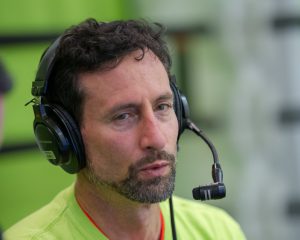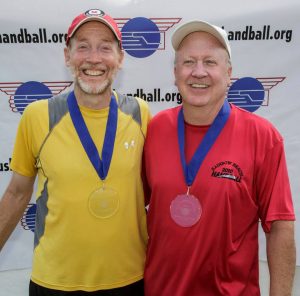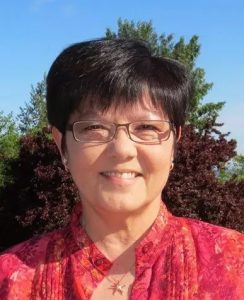Wrap Around with Dr. Dan Zimet, Sport Psychologist
Do you have a question about the greatest game played with a ball? Send it to Dr. Zimet at MDHandball@hotmail.com. For more articles (and additional mental strategies) go to www.WPHLive.tv, menu option ‘Wrap Around’.
Transitioning from elite sport: the ‘aging’ top-pro athlete
After it’s all said and done, all the competition, all the wins, all the glory, now what? Without the highest level of professional competition to fuel you, what happens to all that energy and emotion now? Where will it come from? Have you thought much about this and what are you doing about it? Are you good with your pride and ego? Was it wrapped around your accomplishments and accolades in handball? Are you satisfied with the answer to “who am I” now?
If you continue to play as an aging pro athlete, why still do it? What drives you now? Competition? Camaraderie? More to prove? Sustained notoriety?
Anonymous ex-pro
Popularity, notoriety and prestige are commonly stereotyped benefits of being a ‘jock’, and it’s easy to see why. Sports are fun, challenging, healthy, and exhilarating. Sport is the most consumed form of media for a reason; it’s accessible, relatable, community building, exciting, and the outcomes are never guaranteed. Playing for a favorite professional team is a common childhood fantasy, and for the rare athlete that reaches the apex of their sport, being part of this club of professionals is the culmination of extraordinary sacrifice and consuming commitment.
In their glory days we glamorize and covet our athletic heroes; yet the cycle of life – birth, growth, decline, death – applies to sport as well. All things come to an end, and for the elite athlete the transition out of sport represents a unique and profound challenge. Consider this quote from Sport Illustrated (7/4/2017), “Imagine hitting your peak years – and your peak earning power – in your late 20s, retiring in your 30s and then going about the next half century trying to find a comparable experience.” For the elite athlete, transitioning from sport typically represents a forced loss of their deepest passion. The range of challenges facing a retiring athlete are diverse and profound, including but not limited to financial hardship due to loss of income and career, discharge from their social group and support systems, identity loss, coping with long-term injuries, and existential uncertainty. Studies have shown that recent retirees are at greater risk for depression and suicide, addiction (drugs and alcohol, gambling, sex), financial depletion, arrest, loneliness/social isolation, domestic violence and divorce.
In this issue of Wrap, we will take a closer look at factors related to retirement for elite athletes. We will also consider the impact of age on performance, and how to better cope with the transition out of sport when that becomes necessary. We start by considering two factors most often identified as determinants of athlete retirement outcome; 1) reasons for retirement; and 2) athlete identity.
Reasons for retirement can be divided into two general categories: anticipated/controlled or unanticipated/uncontrolled. Examples of a controlled retirement include loss of interest/motivation, reaching the natural conclusion of an athletes expected career (i.e., graduating college with no expectations of going pro), and deciding to leave the sport for personal reasons (e.g., pursue other interests, fear of injury, electing to go out ‘on my terms’). Examples of uncontrolled retirement include injury and de-selection (i.e., cut from a team, failing to get moved to the next level). Some researchers categorize age as an additional uncontrolled factor or sub-category of injury or de-selection, although I would argue that it depends on the athlete’s mindset about aging. As you may imagine, recreational athletes report a much broader range of reasons, all controllable, for leaving sport. These include lack of time, concerns about performance, lack of fitness, fear of injury, and not knowing where or with whom to participate.
As one would expect, athletes who experience a forced retirement tend to suffer a more difficult transition. Anticipated retirement often coincides with earlier post-career planning, a broadening of interests outside of sport, and a greater sense that the athlete has controlled his or her destiny and career as an athlete. In contrast, an unanticipated retirement often results in feelings of denial, anger, betrayal and/or rejection. A jarring and sudden jettison from the supportive and structured confines of elite sport causes a range of immediate and global losses. Even the massive influx of free time can lead to dark rumination, loneliness, and fears about the future, making the first few months of an unexpected retirement a particularly vulnerable period.
Athlete identity has been defined as the degree to which an individual identifies him or herself solely within the role of being an “athlete.” It’s the loss of this identity that is at the core of the retiring elite athlete’s emotional struggles, brought about by a sudden uncertainty about who they are without their role in sport. People who exhibit lower athletic identity participate in diverse roles, for example as a member of particular trade or field of study, church, social group or club. They may be a musician, artist or social activist. They may have a spouse and children and identify as a father or mother. Studies have consistently observed that high athletic identity means greater adjustment difficulties. They are usually less prepared for retirement, and report more frequent and severe psychological difficulties, social isolation, addiction and feelings described as “loss and void.” Someone low in athletic identity might look forward to the additional time retirement provides for broader pursuits, since life as a professional athlete can make other goals impossible. Those high in athletic identity will have spent little or no time considering these other goals. Tragically, coaches and media can encourage high athlete identity, portraying non-athletic pursuits as little more than distractions from an unwavering pursuit of sport perfection.
Pro and Recreational Athletes. The research previously discussed is focused on the transition process of professional athletes, and typical retirement research subjects are recruited from the Olympics or highly popular team sports like soccer and football. These sports have a notoriously early age of retirement. Less well understood is the transition process of recreational athletes or professional athletes from lifetime sports (e.g., tennis or golf), many of whom are able to choose to continue participation, albeit at a reduced level.
When it comes to handball, retirement can take many forms. For the recreational player, the evolution of our game rarely has a single clear peak and we may spend an entire career motivated to find that next level. Many players relegated to mediocrity in their youth have, through a combination of tenacity, health, and game evolution become dominant in their later years. Many play well into old age, finding competition in similarly skilled players. From a mental standpoint, it’s easy to see how recreational athletes could stay more motivated than a retired professional. New challenges or opportunities available later in life – such as winning a local or national age-bracket – lack the prestige of professional competition that was critical to an ex-pro’s self-image. Also, consider what a retired pro might experience at a local or masters event. Many ex-pros cope with long-term injuries, but even with uncompromised health retired pros experience performance decline due to reductions in practice, conditioning, flexibility, strength, reaction speed, timing and recent tournament experience. In addition to the frustration caused by underperformance, well-meaning fans often comment on these reductions. These quiet mutterings – and sometimes overt statements – only add to the players internal dialogue, leading to the inevitable question of, “why keep doing this?”
Effects of Aging
Thankfully, many negative issues associated with aging can be attributed to disuse and inactivity. That being said, evidence supports what all of us intuitively come to understand as inevitable; Father time has never lost. Starting around age 30 with a marked acceleration after age 50, aging causes declines in strength due to muscle loss and reduced tissue capacity. On average we lose .75% to 1.5% per year, to the tune of 40% losses in the lower body and 30% losses in the upper body between the ages of 30 and 80 years. Unfortunately, endurance and strength training do not appear to attenuate these losses. Furthermore, it’s the complex and explosive tasks involving various functions, such as sport skills, that take the biggest hit. To add insult to injury, we also experience a loss of VO2max, which is the body’s ability to deliver and extract oxygen to meet metabolic demands of vigorous physical activity – up to 50% capacity by age 75. VO2max is an energy metric recognized as the international reference standard of physical fitness. In short, we experience a 10% cardiovascular loss per decade starting in young adulthood, picking up speed through middle age and absolutely dramatic by old age. As with strength training, it would be appealing to believe that with intense exercise we can stop this process. Unfortunately, evidence suggests that continued high intensity training may temporarily slow the process but eventually age-related VO2max losses are the same for the intense exercisers and sedentary folks alike. While sobering, don’t be discouraged. Exercise remains the single greatest method to ward off aging effects, despite the fact that the elderly “can’t do it like we used to.” The differences between sedentary individuals and intense exercisers is massive and, in many ways, far more important than age.
Coping with the transitioning to retirement has better outcomes when a) elite athletes feel a sense of control over the timing of their transition, b) there is identity diversification, and c) planning for life post-career took place. Unfortunately, most elite athletes have not been supported in addressing these issues and as a result face a harsh and unwanted reality with little preparation. So, what can we do?
Create a vision for the future. Be pro-active and start early by looking into post-transition options. Steps can be taken early to plan for issues like finances, career/work, social support, and exercise/health.
Get support. Transitioning from sport is often a lonely and discouraging experience. Sadly, many ex-pros come to realize that some of their relationships will end once their active career is over. Also, for famous athletes, fame and financial pariahs make it challenging to know who to trust. Stay close with friends and family, in and out of sport. Elite athletes often view asking for help as a weakness; I cannot overstate how harmful this mindset becomes since available support systems are useful and often available if the athlete opens up to them. Career counseling and therapy can help bridge the first year of transition, which is often the most difficult time.
Find new ways to be involved. For example, when injured athletes are encouraged to find ways to support the team during their recovery outcomes are improved, including reduced negative mood states, greater compliance with treatment, and more frequent and faster returns to participation. Also, community sport depends on players continuing on the pathway of sport development. We need our veteran players, including retirees, to volunteer and give back to the game. Ex-pros can make a profound impact, using their notoriety, wisdom and contacts to promote local events and teach developing athletes. Ex-professional athletes often get involved in coaching, broadcasting, and advocacy.
Keep playing – or pick another activity. Although no official numbers are available, when health allows many ex-pros continue to play in the friendly confines of their local clubs. Some make appearances in local tournaments, and a few continue to have the health and motivation to compete at the highest levels. Remaining part of the fraternity of handball may help ease other losses associated with retirement from the pro ranks. If injuries hinder those efforts, you may need to pick something new in order to sustain an active lifestyle. Getting active in a sport or physical activity can be fun and challenging.
Know what makes you happy. The field of Positive Psychology studies Flourishing, which studies five foundations of personal well-being. Sport is an excellent source for flourishing. Exercise is well known to induce positive emotions through several mechanisms, including the release of neurotransmitters like Dopamine and the cleansing of stress hormones like Cortisol. Sport is an immersive experience that induces flow state or feelings of being ‘in the zone’. Sport also offers opportunities for relationships and achievement, and for those of us who love Handball there is meaning in being part of the culture and community. Transitioning from sport can create a vacuum in the athlete’s life. Finding new outlets – or different outlets within the sport – to address these needs becomes essential, requiring identity exploration that may have been stunted during active status.
Be humble. Life has a way of humbling all of us, and pride often stands in the way of self-growth. Ask for help. Try something new that makes you a novice again. Share your feelings with someone you trust. I believe it’s only the most courageous of us that are able to authentically and fully be ourselves and honestly share ourselves with others. Hardship and change, although unwelcome, often brings life into sharper focus and through that crucible we can evolve.
Musing from the Masters: Legends of Handball
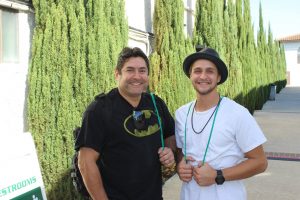 John Robles, Phelan CA. b1965. Highest professional ranking USHA #3. 15 National Masters titles, 4 Worlds titles, 1 Canadian Master Title, Southern California Hall of Fame. Prefers indoors (but I also love outdoors)
John Robles, Phelan CA. b1965. Highest professional ranking USHA #3. 15 National Masters titles, 4 Worlds titles, 1 Canadian Master Title, Southern California Hall of Fame. Prefers indoors (but I also love outdoors)
When it was “all said and done” with all the competition, all the wins, all the glory, I had to contemplate “now what.” Handball has taken much from me physically to be 3rd in the world of a demanding sport: ruptured achilles, ‘Tommy John’ elbow surgery, knee surgery, back injections, worn out hip and early onset arthritis in my shoulder. There were the numerous days, evenings, weekends and holidays spent practicing or at tournaments, time away from family, let alone all the costs; I can go on and on. However, the reward was beyond measure in the camaraderie, friendships, fans and the subsequent minor ‘celebrity’ status and respect around the world. It was really amazing and a pure joy to experience this level of play. I feel I have given back to the sport that has given me so much with numerous clinics, school programs, and donations; I can feel good about stepping away. Of course, now I have to fill this void being into a ‘second’ retirement, which has not been an easy task.
Handball was my life. I must be honest, I miss being on top, being recognized, being a champion. I can no longer define myself by this passion and my success, I have to really contemplate who I am away from Handball and be happy with it. That is probably one of the biggest challenges. Of course, there are other challenges we don’t always think about. For example, I also know staying in shape is more difficult now as the motivation and drive has waned without a concrete competitive goal.
I do believe that our handball world is made up of the best fraternity of people I have ever met. Now being two years into my ‘retirement’, I have no real plans to return (at the moment) and must find a way to stay motivated and healthy. I absolutely do miss my first love; however, time and physical healing will tell.
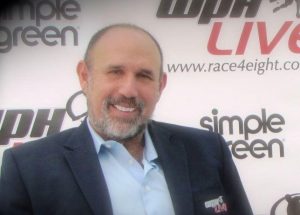 Fred Lewis, Tucson, AZ. Six National Open 4-wall Singles titles, three National Open 3-Wall Singles titles. Prefers any ball any wall
Fred Lewis, Tucson, AZ. Six National Open 4-wall Singles titles, three National Open 3-Wall Singles titles. Prefers any ball any wall
I continue to play and compete for a variety of reasons even after 2 hip replacements and severe back problems:
- Handball is fun. It’s unlike any other types of physical conditioning. I believe in exercise for life so I may as well have fun doing it.
- I love to compete although it is no longer life and death. I can leave the disappointments on the court.
- Camaraderie is huge. My best friends play handball.
- I believe it is important to give back to the sport that has enhanced my life and in so doing inspire young people to play and perpetuate the game.
- I love listening to guys older than I who talk about getting to the next age level (85 and 90). Let’s go for 100!!!
Albert Apuzzi, Brooklyn NY. B. 1955. Handball Hall of Fame, Twenty National Open 1-wall titles, 32-time Open finalist. Prefers 1-wall small ball.
I guess the answer is simple…you play for all the reasons you started playing the game: exercise, camaraderie, competition. The funny part is as you get older and less skilled you can always go up and play in the masters divisions and play people your own age – or still younger than you so it keeps it feeling like worthwhile victories… Oh, I have lost my train of thought! But as you get older and less skilled also the matches become tougher for you and more rewarding to win.
As you might know, I haven’t really played for many years. However, because of the circumstances, I didn’t have to really deal with the same issues as others. I’m finally at the point that, after having both hips resurfaced, I can start getting on the court again once the weather gets warmer. I definitely look forward to doing so and I’m hoping that I still have something left.
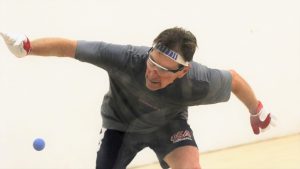 Vern Roberts Jr., Tucson, AZ. b 1954. Handball Hall of Fame, induction 2002. Preferred to play outside (prior to replacement parts)
Vern Roberts Jr., Tucson, AZ. b 1954. Handball Hall of Fame, induction 2002. Preferred to play outside (prior to replacement parts)
Well, there’s two side to this story and I’m afraid I have insight to both.
First, the desire to play handball, stay in shape and have fun was inside me long before I gained any notoriety for playing. And, those reasons don’t go away as proficiency deteriorates. In fact, I’m often pontificating: “The only thing worse than bad handball…. Is NO handball.” In addition to the fitness and the new shots to learn (since you can’t hit the old shots), the camaraderie we enjoy as handball players is priceless. My theory is that all of us appreciate what other handball players have gone through to become handball players, and we respect that. No matter the other character traits.
On the other hand, having been “on the shelf” for some time now and at other times during my 50 years as a handball player, I know how hard it is to come back. It’s almost like starting over. And, I know how frustrating it is to not be able to hit the shots we used to hit. Finally, I know how hard it is to get out of the car/bed during the come-back period (and longer).
Like anything in life, there are risks/rewards. And, then there’s the risk that someone could question after watching me play: “Really? He used to be good?”
But, right now, I can assure you that during this long year of being on the sidelines… I wish I had a game tonight.
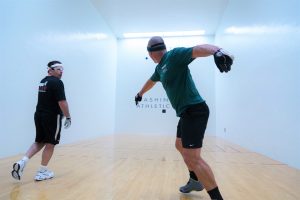 John Bike, Victorville, CA. b. 1966. Handball Hall of Fame, 2012, Multiple National Open 3-wall and 4-wall titles, 3 Worlds Open 4-Wall Titles. Prefers: Any ball, any wall!
John Bike, Victorville, CA. b. 1966. Handball Hall of Fame, 2012, Multiple National Open 3-wall and 4-wall titles, 3 Worlds Open 4-Wall Titles. Prefers: Any ball, any wall!
Like some modern movies, I’ll reveal the ending first, then flashback. Now, I’m happy to say that there will be no more competitive handball for me. The only thing still driving me to play is the camaraderie, and I get more than my fill of that from off-court contacts with old friends and occasional family big ball matches.
It was a long journey from being a guy whose entire life revolved around competitive handball, to the current version of myself. In hindsight, it was a natural progression, and the only time things got bumpy was when I tried to fight this progression. The quest to be my best on the court, achieve notoriety, win stuff, prove things, etc. ran my life in my 20’s. I’m glad that happened then, because that’s when I was best equipped to achieve those things… and it’s how I met the Alvarado/Duarte family.
Then being a spouse and father took priority. I didn’t realize it immediately, but the quest to be good at these things is more gratifying than the handball thing (Duh). Then I followed my wife, Lupita into the teaching profession. Fourteen years in, I can report that what to do with my energy and emotion has not been an issue at all.
To the “now what?” I’m a father, spouse, teacher, and friend with competitive juices focused on beating my previous self in these areas. I won’t ever be crowned World Champion of any of these, but the challenge to excel at them keeps me on my toes.
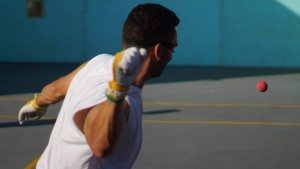 Cesar Sala, Bronx NY. b 1977. Six National Open 1-wall titles (2 singles & 4 doubles), 1 Worlds Singles small ball. Prefers 1-wall small ball.
Cesar Sala, Bronx NY. b 1977. Six National Open 1-wall titles (2 singles & 4 doubles), 1 Worlds Singles small ball. Prefers 1-wall small ball.
I appreciate the time I’ve had playing handball at a high level and for as long as my body allowed my to do it. In 2008 I was fortunate enough to put some of my personal demons to rest by defeating my longtime nemesis Satish Jagnandan at the national’s finals. At that point I was ready for the next stage of my life and met my wife a couple of weeks after that. For me, settling down and focusing on my family life has made the transition a lot easier to accept although I’ve done my share of whining about playing more. I saw my skill level gradually drop as my body changed along with my age. I’ve spent the last few years trying to make a comeback while fighting injuries given to me by Father Time and my – at times – inflated ego.
My wife and children have witnessed me going through this process as they remind me of all the good things in life. I see their struggles and help them through it and they do the same for me. My little one has my competitive spirit and she has learned to be humble while staying confident at the same time. I’m struggling with that as I fight my body.
When a player loses his youthful abilities, it is a very difficult thing to deal with. As with anything else it’s all about perspective. My family keeps things in perspective for me. My wife encourages me to go to church whenever possible and to stay involved with our girls’ school activities. Seeing them grow is truly a blessing for me and it fills me with all the pride I need. That allows me to reflect on my years as a top player with good feelings and a sense of appreciation.
Life is short and everything comes to an end at some point. I appreciate what I’ve accomplished in handball as a pro and I plan on playing in the age divisions barring any more major injuries. I’ve always enjoyed the people and players of our game and I’m looking forward to competing as I enter my next phase in life and handball.
Dave Dohman, Munster, IN. b 1956, Handball Hall of Fame, 2009. Nine National Open 3-Wall Doubles titles, 23 National Masters titles. Prefers 3-wall
Plain and simple, I still enjoy the competition and of course the accompanying camaraderie. After two knee scopes, a full knee replacement, broken bones, and more pulled muscles than I can recall I may be a mere shadow of what I was long ago but I’m going down swinging! As I’ve stated in past issues of WRAP, I’ve always felt the benefits of playing the perfect game far outweigh the negatives. Great stress relief, overall improved health benefits along with weight loss and heart conditioning…you name it, us Handballers reap the advantages of a longer and healthier life.
The process of dealing with more frequent losses these days is a complex issue better addressed by a sports psychologist. Part of my moving forward is trying to forget the negative past and plan for a positive future. Aging minds and failing memories are a PLUS for any athlete that has been served by Father Time!
Anyone up for a game of singles?? I’ll take 5 points…. along with the serve. And loser buys.
LeaAnn Martin, Bellingham, WA., b. 1956, Handball Hall of Fame (2010), 20+ National and World titles in singles and doubles, played 4-wall.
I competed in handball for about three decades. As I started getting older, I recognized that age group divisions (versus open/pro) in handball were where I needed to be. Prior to handball, I competed in a variety of other sports. Physical activity has been an important part of my life for as long as I can remember. As a result of sport participation, competition has been a huge part of my life as well. However, it was never the most important thing to me. Other aspects of my life, such as my career and family, have been more important, despite the fact that I loved winning and I trained as hard as I could.
Did I miss getting beat up in the court by younger, faster, better players? Nope. In fact, I watch some of the young players now and am quite thankful I don’t have to return their shots! The beauty and uniqueness of handball is that is truly a lifetime sport and the friendships one gains on and off the court last forever. That’s also why the distance from high level competition does not bother me much. As well, an ankle replacement in the past couple of years has prevented me from playing handball, much less competing. While I am limited in the types of activities I can do now, I am so grateful I can still be physically active in other ways (e.g., cycling, strength training). But staying involved in a variety of ways in handball, the sport I love so much, keeps me content and fulfilled.
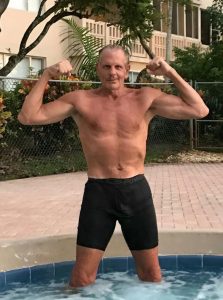 Joseph Durso, Brooklyn NY. Handball Hall of Fame, Twenty-five National Open 1-wall titles (14 singles & 11 doubles). Prefers 1-wall small- and big-ball
Joseph Durso, Brooklyn NY. Handball Hall of Fame, Twenty-five National Open 1-wall titles (14 singles & 11 doubles). Prefers 1-wall small- and big-ball
How did you remain competitive for so long, and why did you work so hard at it for so long?
Handball is simply too much fun to ever give up playing. Period. However, the other aspects of your question require a deeper analysis. For purposes of this discussion I will ignore the “how” aspect of your question and focus rather on the more fun part – the why of it all.
Let’s begin by acknowledging that one sad aspect of most elite athletes is their tendency to continue playing well past their prime and, depending on the sport, often to tragic results. With one’s ego heavily invested, it’s very hard to admit to yourself that your just not really competitive anymore. In my case that line became blurred and extended because of a few factors. The first is that in my prime I was always much better than my competition. Even when I did start to decline, there was still a cushion where I was a few points better than whoever I was playing. This safety margin extended well into my 40’s, and even at a later point when I was no longer better than my competition the fact remained that I was not yet any worse either. That equilibrium remained until my mid 40’s, so any thought of stopping prior to that never even occurred to me.
The other factor that let me continue to play competitively for so long is that I never got hurt. It’s a sad fact that the careers of many of the great handball ended at about 35 years of age. I believe such greats as Oscar, Haber, Jacobs, Sandler, Hershkowitz, and Alvarado all had their singles careers virtually ended at about 35 from either injury to the back or just the cumulative effects of decades of wear and tear. In my case, not only was I injury-free at 35 I was actually still improving; so much so that I went on to win 4 or 5 more National singles titles.
Another reason for my greater longevity was the nature of the way I approached the game. All through my handball career, despite bring 6 foot 2 with tremendous power at my disposal, I was known for always tapping the ball with my right and very gently using my left with a stiff arm swing to often just caress the ball with as little force as possible, allowing the ball to hit the wall low and simply dribble out far out of the reach of my opponents. Additionally, I always positioned myself at center court and with my long reach I really didn’t need to run down many shots and I had the reputation of always running my opponents back and forth while I conserved energy being stationary at mid court. This style helped me to play injury free throughout the entirety of my competitive career, and even to this day at 63 I have never received any injury from a lifetime of playing.
Another reason for my longevity must be credited to the dynamics of the one-wall game. Since the short line is closer to the wall it’s easier to serve aces than in 3 or 4 wall. As a result, my serve was always a huge weapon and it allowed me to score quick, easy points with a minimum of effort. Similarly, the server in one wall remains closer to the wall, making it easier to tap in kills off the return of serve. All of this allowed me to conserve energy and reduced the likelihood of injury.
Finally, it must be said that when an athlete devotes his entire life to any sport, one’s identity becomes inseparably entwined to the sport itself. Even though I was a teacher and an attorney, none of that really ever mattered to me, that was simply something I was doing so that I could play handball. All I ever really cared about was playing and winning. Once that mind set takes hold, it’s impossible to walk away and such athletes have to be forced to stop and dragged away kicking and screaming from either injury, illness or some other life altering disaster. In my case, nothing like that ever arose so I just kept going until at about 50 my overall physical skills had slipped away to the point where it was obvious, even to me, that I sadly was no longer competitive. At that point my pride didn’t allow me to keep losing, so I walked away.










